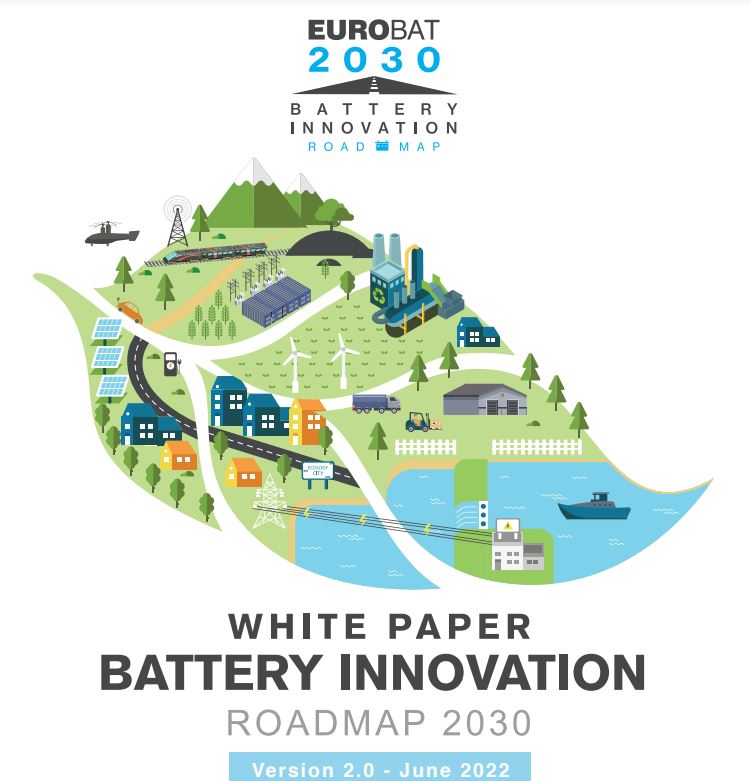White Paper: Battery Innovation Roadmap 2030 – version 2.0 – June 2022
The Battery Innovation Roadmap 2.0 is an update of the original publication (from June 2020) to account for the latest technological developments and changes in the EU’s policy objectives, primarily the proposal for a Batteries Regulation (released in December 2020). It reflects the technological realities and potential of the best available battery technologies and how they can contribute to the EU’s policy objectives.
The updated Roadmap includes:
- An update of the innovation potential of mainstream battery technologies
- New electro-chemistries, such as post Li-ion and post-lithium technologies
- New and fine-tuned end-user applications, such as mild- and full HEVs, off-road industrial vehicles, electric aviation and off-grid energy storage applications
- New aspects with regard to circularity and critical raw materials
Download the White Paper (part 1) here
Download the Annexes (part 2) here
The key points addressed in the Roadmap are:
The European Green Deal and Batteries Regulation represent the key legislative drivers for battery innovation to meet the EU’s objectives in the coming years.
- The Green Deal, presented in December 2019, is one of the main drivers to further electrify end-user applications and decarbonise transportation, the energy system, telecoms, off-road industrial vehicles and many other Innovations in battery technologies are recognised as one of the key enablers to make this happen.
- The Batteries Regulation will be the main driver to further reduce the environmental and societal lifecycle impact of batteries. Not all mainstream technologies are at the same level of maturity and further battery R&D is required.

Each mainstream battery technology – lead-, lithium-, nickel- and sodium-based – has a substantial developmental potential, driven by the requirements of different applications. No single battery chemistry or technology can meet all the challenges of end-user demand in a multitude of applications, combining high power and energy density, long life, low cost, excellent safety and minimal environmental impact. Improvements in service life, performance and safety will be enabled by using innovative materials and cell components in the electrochemical system, as well as applying advanced battery management systems. The outstanding feature in this process is that these improvements are always tailored to the needs of a specific application.
The European battery manufacturing industry (all chemistries) is committed to meeting the EU’s objectives, in accordance with the Green Deal and Batteries Regulation. The industry is committed to increasing its investments in innovation and to scaling up battery production in line with future demand for batteries and requirements related to performance, safety and the circular economy.
Europe needs a regulatory landscape that treats all battery technologies equally:
- To maximise existing capabilities
- To allow all mainstream technologies to evolve and innovate in line with future requirements, to meet the carbon-neutral objectives of the Green Deal and to make Europe less dependent on fossil fuel imports
- To make Europe less dependent on imports of materials and, therefore, less vulnerable to shortages (by utilising different technologies and developing the circular economy)
